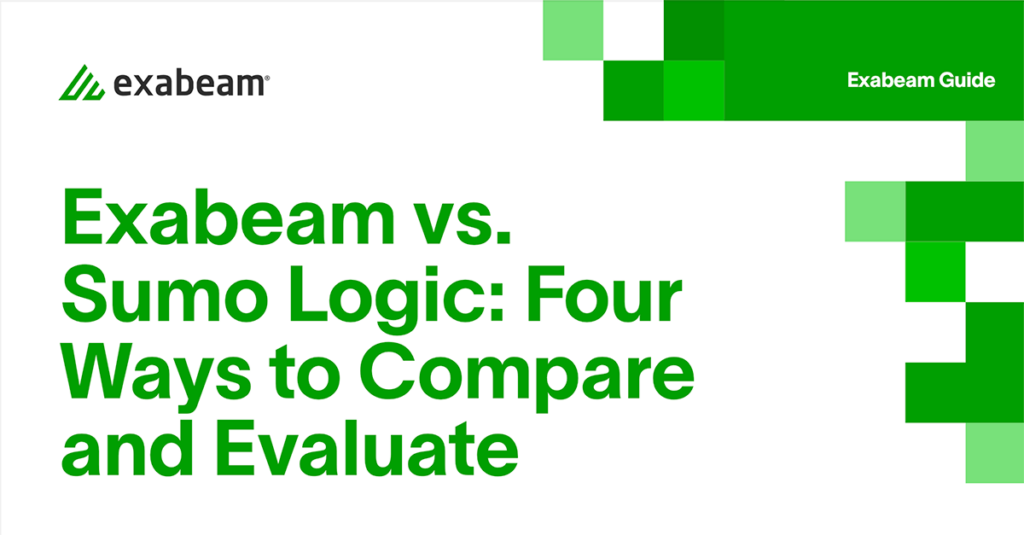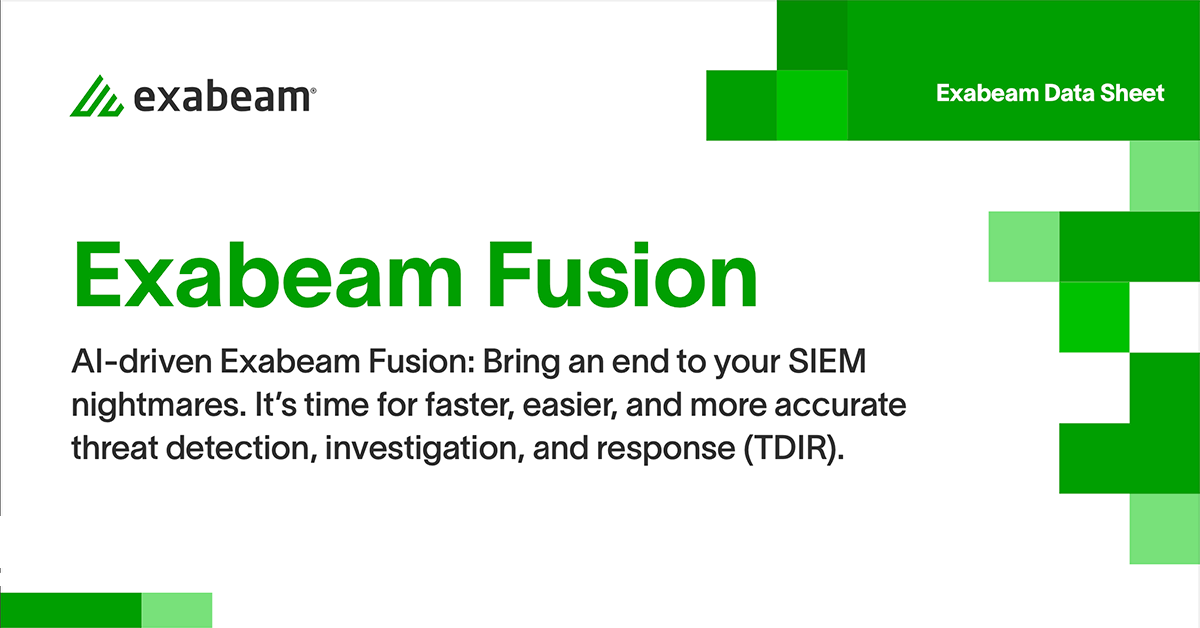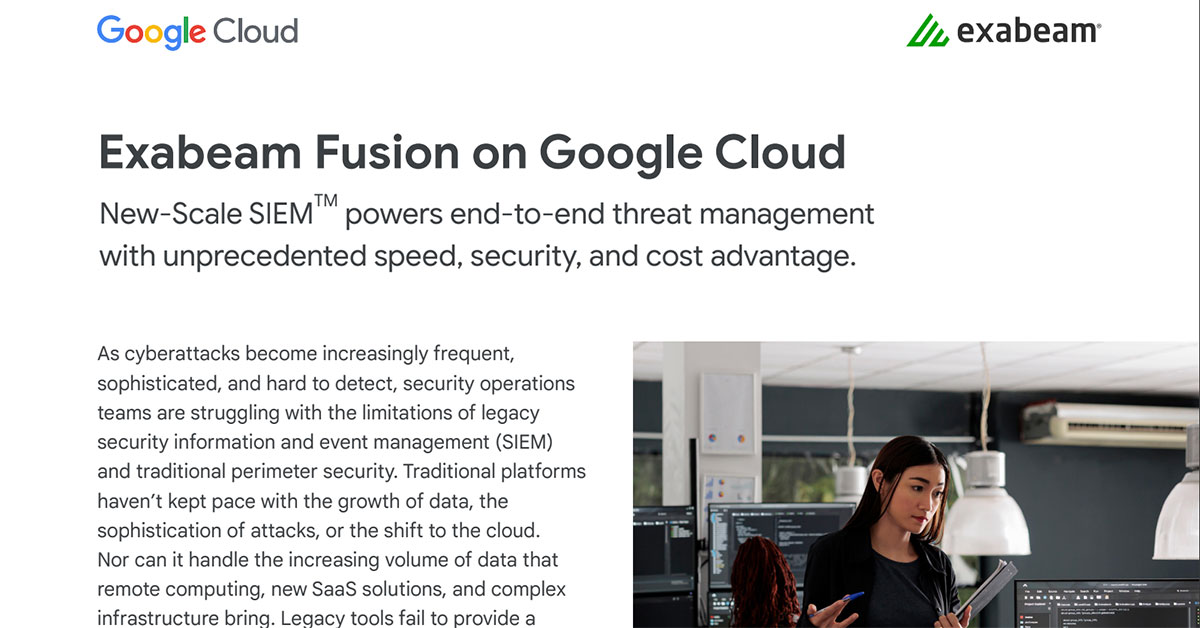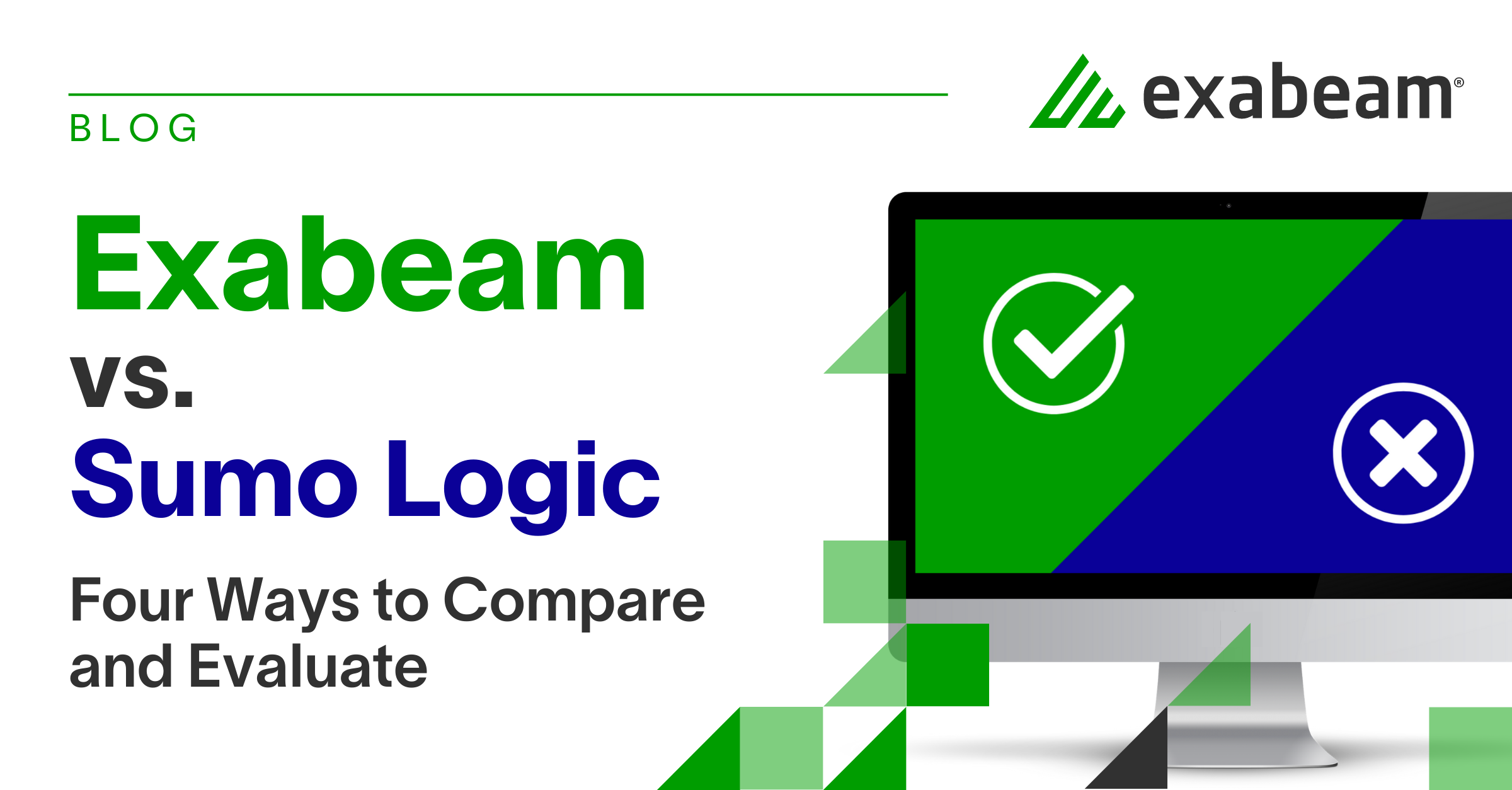When it comes to security information and event management (SIEM) solutions, organizations often find themselves comparing top contenders in the market. In this blog post, we will discuss four ways to compare and evaluate Exabeam and Sumo Logic, with a focus on why Exabeam emerges as the superior choice for your organization.
- Sumo Logic is not first and foremost a security company. Sumo Logic is not primarily a security company. It offers cloud-based business analytics software that caters to various verticals, including security. In contrast, Exabeam is a dedicated security company, and our product offerings have been designed with security as the primary focus, giving us a strategic edge over Sumo Logic.
- Sumo Logic has poor UEBA capabilities. Sumo Logic’s user and entity behavior analytics (UEBA) capabilities are not as mature compared to Exabeam. With 700+ machine learning (ML)-driven models, Exabeam excels at detecting threats and establishing baselines for normal user and entity behavior. In contrast, Sumo Logic’s rule engine is less advanced and lacks the comprehensive coverage provided by Exabeam.
A current Exabeam customer with around 300 workstations also employs Sumo Logic and has encountered issues with excessive alerts and substantial noise. This includes a high number of UEBA-related alerts and false positives.
- Sumo Logic’s SIEM product is poorly integrated with its data platform. Sumo Logic’s SIEM product is not well integrated with its data platform, leading to fragmentation and an extra step in ingesting data for security analysis. The Exabeam Security Operations Platform, on the other hand, offers seamless integration with more than 500 IT and security products, enabling immediate search and availability of data. The same customer mentioned that the single-pane-of-glass interface takes an excessive amount of time to load data.
- Sumo Logic’s tools require extensive setup to provide value. Sumo Logic’s tools require extensive manual configuration to extract value from them, which may not be feasible for larger organizations. Exabeam, on the other hand, offers more than 1,900 models for anomalies, with a powerful ML-based engine that stitches together incidents spanning multiple entities, providing scalability and ease of setup. A final customer observation mentioned that they were considering switching to a different vendor that offers better pre-written queries and rules, particularly when it comes to configuring integrations and rules.
Conclusion
While both Exabeam and Sumo Logic are competitive SIEM solutions, Exabeam stands out as the superior choice for organizations due to its dedicated focus on security, advanced UEBA capabilities, seamless integration with other products, and ease of setup. When considering a SIEM solution for your organization, it’s essential to thoroughly evaluate the offerings of each vendor and choose the one that aligns best with your organization’s unique security needs and infrastructure.
Learn more about Exabeam
To learn more, download our guide, “Exabeam vs. Sumo Logic: Four Ways to Compare and Evaluate“.

Similar Posts
Recent Posts
Stay Informed
Subscribe today and we'll send our latest blog posts right to your inbox, so you can stay ahead of the cybercriminals and defend your organization.
See a world-class SIEM solution in action
Most reported breaches involved lost or stolen credentials. How can you keep pace?
Exabeam delivers SOC teams industry-leading analytics, patented anomaly detection, and Smart Timelines to help teams pinpoint the actions that lead to exploits.
Whether you need a SIEM replacement, a legacy SIEM modernization with XDR, Exabeam offers advanced, modular, and cloud-delivered TDIR.
Get a demo today!













